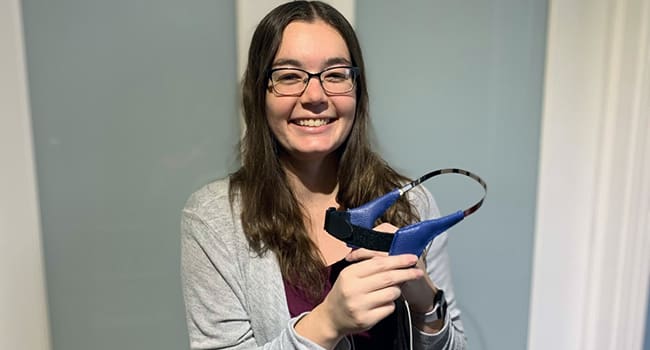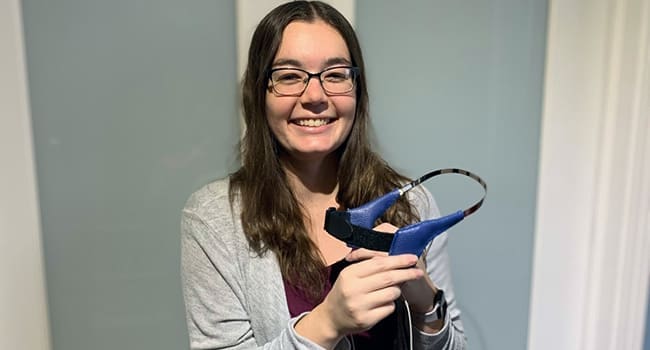New wearable tech could help improve the speed and accuracy of stroke diagnosis
A new technology developed by University of Alberta neuroscientists is the first step in developing a low-cost, portable method to improve the diagnosis and detection of stroke – before patients arrive at the hospital.
“We used a portable headband with embedded EEG sensors, a gyroscope and an accelerometer to see if this can help improve the diagnosis of stroke,” said Cassandra Wilkinson, graduate student in the Department of Psychology and project lead on the study.
“We used machine learning to predict stroke severity, and found this device to have a diagnostic accuracy that is similar to the current stroke scale used by paramedics,” Wilkinson noted.
The pilot study examined patients in the hospital a few days after receiving a stroke diagnosis. Initial results show that the technology is able to differentiate between patients who have suffered a stroke and those who have not, and can detect the severity of the stroke.
 Project lead Cassandra Wilkinson and the prototype EEG headband, a device that could help diagnose strokes |
| Related Stories |
| Clot-busting drug used for heart attacks effective in treatment of stroke
|
| We must do more for seniors coming home from hospital
|
| New devices could prevent a significant number of disabling strokes
|
“This EEG technology is simple enough that, in the future, we envision that it could be used by emergency medical services for all patients with a suspected stroke,” explained Kyle Mathewson, associate professor in the Department of Psychology.
“We are currently testing the device in the emergency room at the University of Alberta Hospital, with plans to expand the testing to ambulance services.”
Similar to the way that electrocardiograms are used to assess patients with chest pain or suspected heart attacks, the low-cost, portable technology could be used on any patients who are suspected of suffering from a stroke.
“Detecting stroke in the prehospital setting, such as in the ambulance, ensures that patients are quickly transported to hospitals that offer treatments to restore blood flow and reverse stroke-related disability,” said Brian Buck, associate professor of medicine in the Division of Neurology.
“Faster detection and early treatment of stroke improves patient outcomes.”
Funding for the research was provided by Alberta Innovates and the Natural Sciences and Engineering Research Council of Canada. Collaborators on the study include undergraduate student Jennifer Burrell, as well as U of A scientists Jonathan Kuziek and Sibi Thirunavukkarasu.
Mathewson and Buck are members of the U of A’s Neuroscience and Mental Health Institute.
The study, “Predicting stroke severity with a 3-min recording from the Muse portable EEG system for rapid diagnosis of stroke,” was published in Scientific Reports.
| By Katie Willis
Katie is a reporter with the University of Alberta’s Folio online magazine. The University of Alberta is a Troy Media Editorial Content Provider Partner.
The opinions expressed by our columnists and contributors are theirs alone and do not inherently or expressly reflect the views of our publication.
© Troy Media
Troy Media is an editorial content provider to media outlets and its own hosted community news outlets across Canada.

